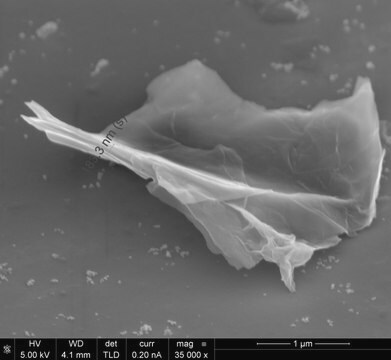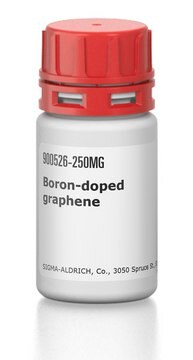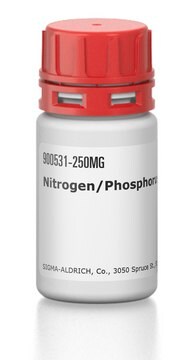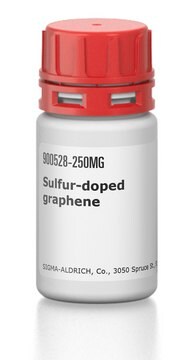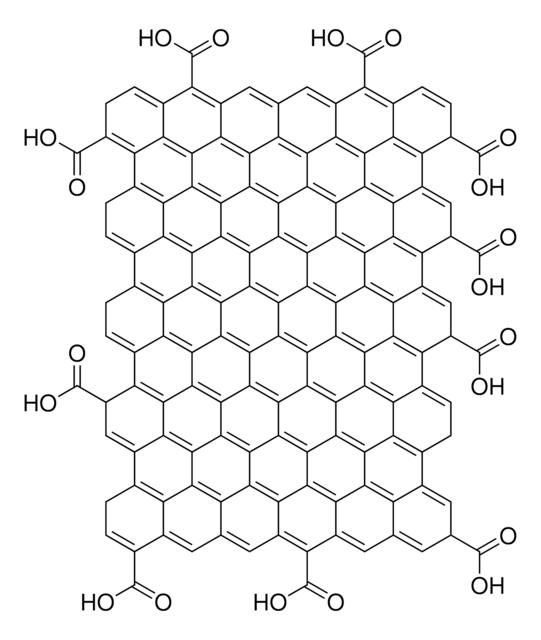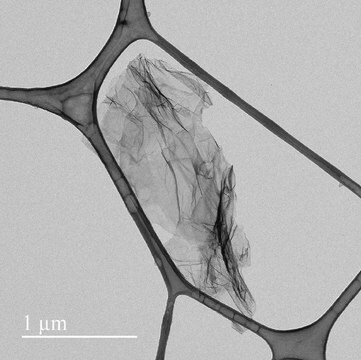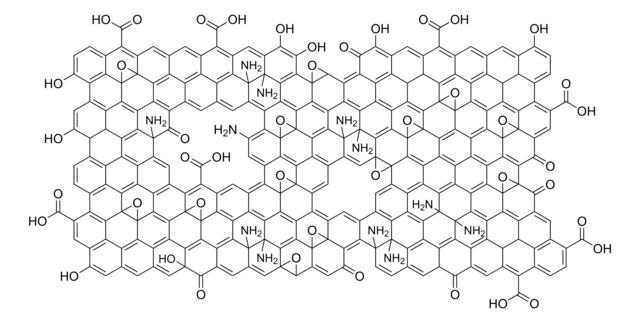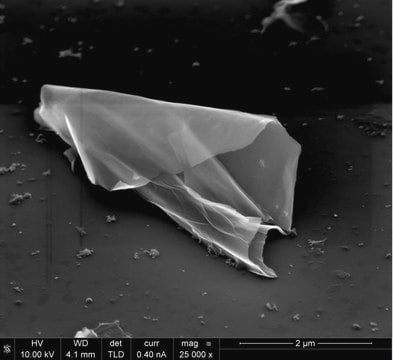900527
Doped graphene
nitrogen-doped, avg. no. of layers, 1 ‑ 5
Synonym(s):
N-Doped graphene, NDG, NG
About This Item
Recommended Products
product name
Nitrogen-doped graphene, avg. no. of layers, 1 ‑ 5
Assay
≥95%
Quality Level
form
powder
feature
avg. no. of layers 1 ‑ 5
composition
Carbon, 85-95%
Nitrogen, 2.0-4.0%
Oxygen, <7.5%
surface area
>500 m2/g , BET
Looking for similar products? Visit Product Comparison Guide
General description
- Typical thickness: 1-5 layers.
- Typical size : 0.5-5 μm.
Application
- Electro catalyst.
- Field-effect transistors.
- Sensors.
- Lithium ion batteries.
- Supercapacitors.
Storage Class Code
11 - Combustible Solids
WGK
WGK 3
Flash Point(F)
Not applicable
Flash Point(C)
Not applicable
Choose from one of the most recent versions:
Certificates of Analysis (COA)
Don't see the Right Version?
If you require a particular version, you can look up a specific certificate by the Lot or Batch number.
Already Own This Product?
Find documentation for the products that you have recently purchased in the Document Library.
Articles
Advances in scalable synthesis and processing of two-dimensional materials
Our team of scientists has experience in all areas of research including Life Science, Material Science, Chemical Synthesis, Chromatography, Analytical and many others.
Contact Technical Service